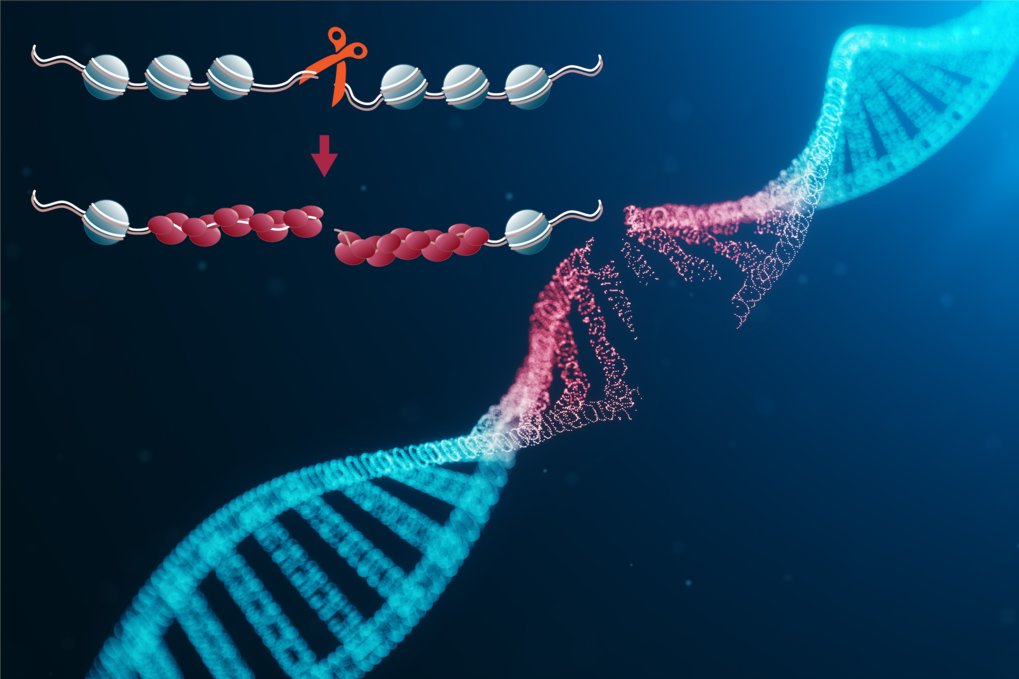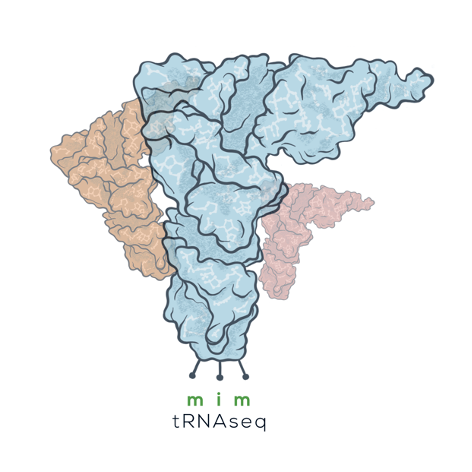
Peritore, M., Reusswig, K.U., Bantele, S.C.S., Straub, T., and Pfander, B.
Mol Cell, 2021, online ahead of print.
doi: 10.1016/j.molcel.2021.02.005
Strand-specific ChIP-seq at DNA breaks distinguishes ssDNA versus dsDNA binding and refutes single-stranded nucleosomes
In a first step of DNA double-strand break (DSB) repair by homologous recombination, DNA ends are resected such that single-stranded DNA (ssDNA) overhangs are generated. ssDNA is specifically bound by RPA and other factors, which constitutes a ssDNA-domain on damaged chromatin. The molecular organization of this ssDNA and the adjacent dsDNA domain is crucial during DSB signaling and repair. However, data regarding the presence of nucleosomes, the most basic chromatin components, in the ssDNA domain have been contradictory. Here, we use site-specific induction of DSBs and chromatin immunoprecipitation followed by strand-specific sequencing to analyze in vivo binding of key DSB repair and signaling proteins to either the ssDNA or dsDNA domain. In the case of nucleosomes, we show that recently proposed ssDNA nucleosomes are not a major, persistent species, but that nucleosome eviction and DNA end resection are intrinsically coupled. These results support a model of separated dsDNA-nucleosome and ssDNA-RPA domains during DSB repair.




